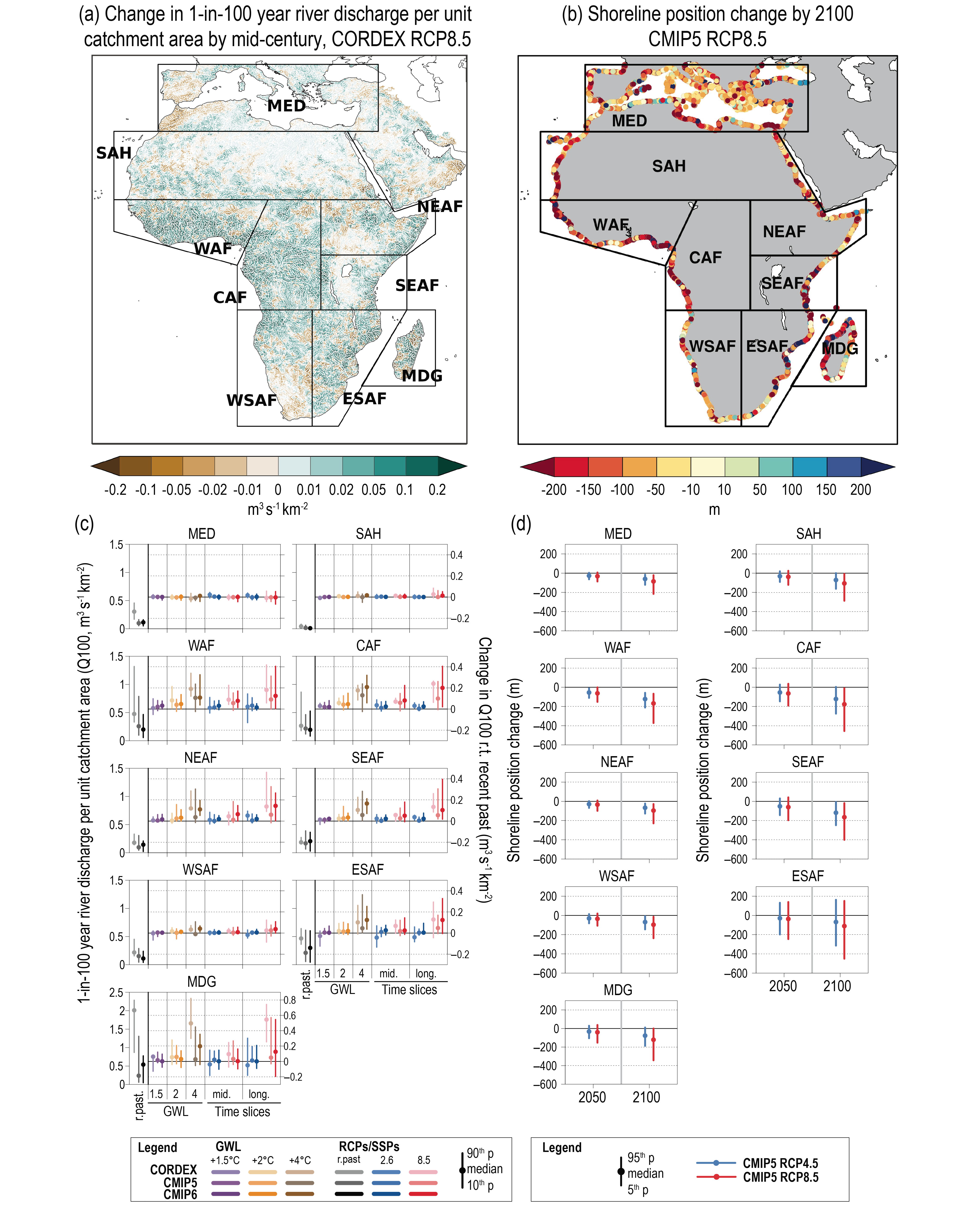Back chapter figures
Figure 12.5
Figure caption
Figure 12.5 | Projected changes in selected climatic impact-driver indices for Africa. Mean change in 1-in-100-year river discharge per unit catchment area (Q100, m3s–1km–2) from CORDEX-Africa models for 2041–2060 relative to 1995–2014 for RCP8.5. (b) Shoreline position change along sandy coasts by the year 2100 relative to 2010 for RCP8.5 (metres; negative values indicate shoreline retreat) from the CMIP5-based dataset presented by Vousdoukas et al. (2020b). (c) Bar plots for Q100 (m3s–1km–2) averaged over land areas for the AR6 WGI Reference Regions (defined in Chapter 1). The left-hand column within each panel (associated with the left-hand y-axis) shows the ‘recent past’ (1995–2014) Q100 absolute values in grey shades. The other columns (associated with the right-hand y-axis) show the Q100 changes relative to the recent past values for two time periods (‘mid’ 2041–2060 and ‘long’ 2081–2100) and for three global warming levels (GWLs, defined relative to the pre-industrial period 1850–1900): 1.5°C (purple), 2°C (yellow) and 4°C (brown). The bars show the median (dots) and the 10–90th percentile range of model ensemble values across each model ensemble. CMIP6 is shown by the darkest colours, CMIP5 by medium, and CORDEX by light. SSP5-8.5/RCP8.5 is shown in red and SSP1-2.6/RCP2.6 in blue. (d) Bar plots for shoreline position change show CMIP5-based projections of shoreline position change along sandy coasts for 2050 and 2100 relative to 2010 for RCP8.5 (red) and RCP4.5 (blue) from Vousdoukas et al. (2020b). Dots indicate regional mean change estimates and bars show the 5–95th percentile range of associated uncertainty. Note that these shoreline position change projections assume that there are no additional sediment sinks/sources or any physical barriers to shoreline retreat. See Technical Annex VI for details of indices. Further details on data sources and processing are available in the chapter data table (Table 12.SM.1).
